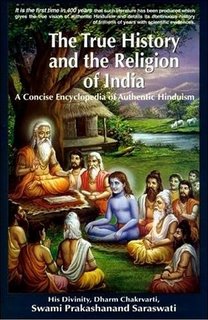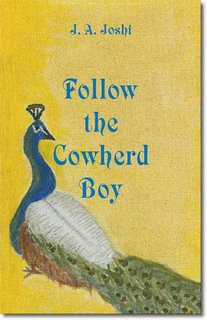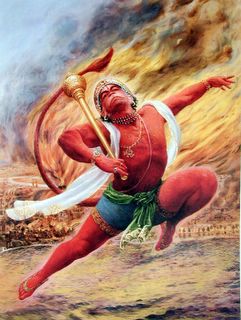
I purchased the above book for myself... Having gone through it, I simply had to recommend this book to as many people as possible. It is not a "light" read. Being hard-backed and with around 800 pages (dependending on whether you purchase an India printed copy or American one), its not something you can carry around with you! However, don't let that put you off!
This
single book covers topics which you would find dozens of of books. It covers the arguments of evolution (big-bang theory) and how they are illogical! How Brahma created the universe, our Hindu Dharma evolved and the first Man (Swayambhuva Manu) and Woman (Shatroopa) were created.
An earlier chapter of the book cover topics on the Sankrit language, and how the British tried to destroy the culture, religion and history of India! This is all documented by the author Swami Prakashanand Saraswati with references to the orignal material written by the Europeans scandalizing our dharma!
The contents of the book can be viewed here:
Contents"The accounts of this book reveal the complete history, philosophy, knowledge of our eternal Divine scriptures and the Divinity of Bhartiya religion in a precise manner; thus, it is a concise encyclopedia of authentic Hinduism produced for the first time in 400 years. Bhartiya history, philosophy and the knowledge of God and God realization are the various aspects of one single Divinity, and thus, they are all intertwined together. You cannot claim to know one aspect without knowing the others, and that needs proper training, learning and a careful understanding of all the facts that are related to Hinduism.
As it describes all the aspects of Hinduism in a precise and concentrated manner, this book has to be studied like a text book, not like a regular reading material, because its every word and every sentence has its value. Just like a lawyer, while studying a law book, if he skips even 2% of its sections, his knowledge remains incomplete and he cannot fully understand the law until he studies the entire book. Similarly, to understand Hinduism, you have to study and learn all of its features: social, cultural, historical and the Divine. Only then you can have the correct understanding of Hinduism that was introduced and established by Brahma through the Vedas and the Puranas, and was further augmented by the descensions of supreme God, Bhagwan Ram and Krishn."
Purchasing the book
:: If you are in Austin, Texas (USA), then you can go to the Barsanadham temple.
:: From the book website (orders in America)
:: Amazon USA (You can still order from here if you are in the UK.)
:: Amazon UK
Finally, I use the source "Abe Books", (who have both a UK and USA websites, depending on where you wish the book to be delivered) to order many books. I recently ordered another copy from a bookstore in India:
:: AbeBooks USA
:: AbeBooks UK
I hope you purchase a book! I am not affiliated with the author, publisher or sellers of this book. I just feel that this book is such a good read - every Hindu household should have a copy!
 Imagine the world today - if he could have communicated like this...
Imagine the world today - if he could have communicated like this...




